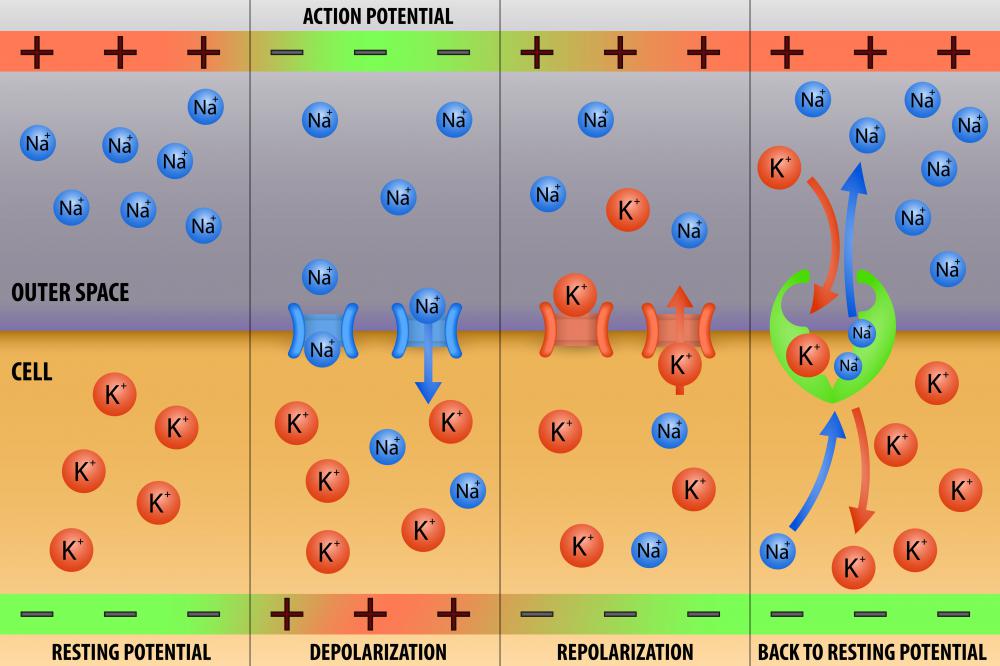At WiseGEEK, we're committed to delivering accurate, trustworthy information. Our expert-authored content is rigorously fact-checked and sourced from credible authorities. Discover how we uphold the highest standards in providing you with reliable knowledge.
What Is Action Potential Conduction?
Action potential conduction is the process of how the voltage gradient, or difference in electrical charge, in a cell passes on to others or through a nerve cell. The charge outside of a cell membrane is typically negative, while it is positive on the inside. With nerve cells, or neurons, proteins that channel positively charged particles, called ions, across the membrane usually allow changes to action potential. Changes in the flow of these particles can increase or decrease the difference in charges and normally control whether signals are conducted or not. Conduction is usually guided by the flow of ions, normally occurring over a certain distance down an axon before passing across the cellular membrane.
In the nervous system, some cells have relatively short axons while others have extensions that go for longer distances. Action potential conduction is also affected by axon diameter. If it is wider, then more ions can pass through the axon and conduct more current. The distance of conduction is usually shorter for larger diameter neurons, however.

Depolarization of cell membranes is spread through action potential conduction. Nerve cells also typically undergo a resting phase called a refractory period, during which the channels for charged particles do not open. Electrical signals, therefore, can pass in one direction from the cell body to the end of the axon; this can also control how many times a neuron can fire in a given amount of time.

Action potential conduction is often aided by coatings of myelin, which is generally made of layers of glial cells. Myelin-covered cells can conduct nerve impulses farther because the ions can’t penetrate the coating. Nodes in between glial cells make up breaks in a myelin sheath where hormones and ion channels can pass through. Action potential conduction typically occurs very quickly in between these nodes without any loss in signal strength. If myelin degrades, then the conduction of action potentials down nerve fibers can be disrupted, sometimes resulting in conditions like Multiple Sclerosis (MS) in which body functions are affected by a lack of nerve signals.

Currents usually flow through cells because the charge and electrical potential differ depending on location. Action potential conduction generally enables currents to flow along the entire length of an axon, on the inside of the membrane. When currents cross over the membrane, into muscle cells for example, the difference in charges usually causes a flow in the opposite direction on the outside. Electrical potential and impulse speed can be calculated using mathematical equations that factor in the intensity of the action potential as well as physical distance.
AS FEATURED ON:
AS FEATURED ON:














Discuss this Article
Post your comments